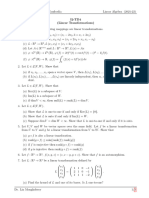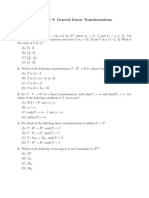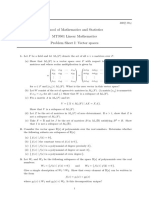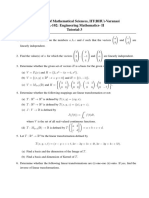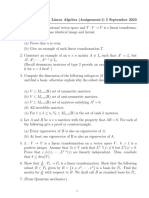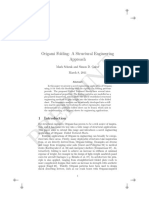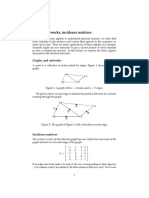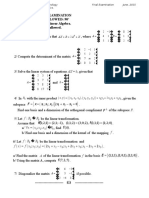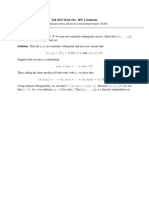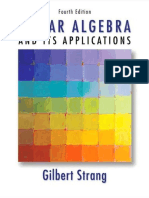0% found this document useful (0 votes)
56 views2 pagesTutorial 4 Linear Algebra
The document contains a tutorial for a Linear Algebra course at the Indian Institute of Technology Indore, focusing on linear transformations and their properties. It includes various problems requiring the determination of linear transformations, examples of linear maps, and calculations of null spaces and range spaces. The tutorial also explores matrix representations of linear transformations and their applications in different vector spaces.
Uploaded by
subwayakg14Copyright
© © All Rights Reserved
We take content rights seriously. If you suspect this is your content, claim it here.
Available Formats
Download as PDF, TXT or read online on Scribd
0% found this document useful (0 votes)
56 views2 pagesTutorial 4 Linear Algebra
The document contains a tutorial for a Linear Algebra course at the Indian Institute of Technology Indore, focusing on linear transformations and their properties. It includes various problems requiring the determination of linear transformations, examples of linear maps, and calculations of null spaces and range spaces. The tutorial also explores matrix representations of linear transformations and their applications in different vector spaces.
Uploaded by
subwayakg14Copyright
© © All Rights Reserved
We take content rights seriously. If you suspect this is your content, claim it here.
Available Formats
Download as PDF, TXT or read online on Scribd
/ 2










